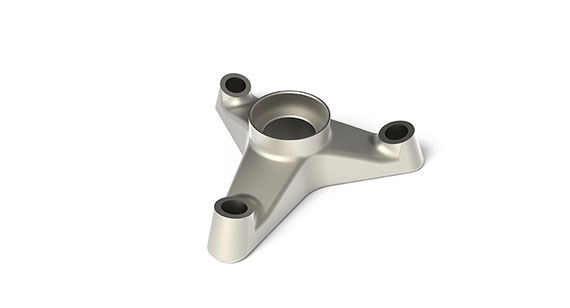CNC Machining: 3-Axis vs. 5-Axis Indexed vs. 5-Axis Continuous

Conventional CNC machining consists of 3-dimensional processing controlled by side-side (X), front-back (Y), and up-down (Z) movements to remove material from a raw block of plastic or metal material. This type of machining is still very common in today, and is suitable for most geometries, but milling from only three sides does have its limitations.
Enter 5-axis indexed machining. The process uses the same 3-axis control for the milling process, but the machining table has the ability to rotate in two additional directions. This allows a workpiece to be machined from all sides, which reduces the need for set ups and cuts cost. It also improves the capabilities of the CNC machine, allowing for more complex features to be milled.
Now 5-axis indexed milling isn’t to be confused with true 5-axis machining, which allows for continuous machining of all three axes and the two rotational axes. Also known as 3+2 machining, 5-axis indexed machining does not maintain continuous contact of the cutting tool and work piece through all rotational axes. It does, however, share many of the same benefits as standard 5-axis machining, such as:
- dimensional stability due to fewer set-ups
- improved surface finish using shorter tooling
- lower cycle time to reduce cost
- greater feature capabilities due to compound angle positioning
Five-axis indexed machining is perfect for parts that don’t require extreme contour controls like jigs, fixtures, housings, and other components frequently used in manufacturing. If you need to manufacture a design with extremely fine features, true 5-axis machining may be best for you.
With 5-axis indexed machining at Brazil Metal Parts, you can choose from hard and soft metal materials with maximum dimensions of 3.9 in. by 2.9 in. by 2.6 in. with the added benefit of non-orthogonal surface machining. If you need larger plastic or metal parts for prototyping or low-volume runs, we have the availability to produce geometries of 10 in. by 7 in. by 3.75 in. in ABS, acetal, and aluminum.
Can’t decide if 3-axis or 5-axis indexed machining is best for you? Don’t worry—our automated quoting and toolpathing software selects the optimal process for your part geometry. Upload your CAD model today for a free cost and manufacturability review. In addition to pricing information, the quote includes design analysis, which will identify any difficult-to-mill features and even provide an as-milled view, so you are aware of any remaining material that can’t be removed during the machining processes.
Still have questions? Our knowledgeable application engineers are here to assist you and can be contacted at [email protected] or by calling +86-755-29729151. We have additional resources and design tips for CNC machining that can be found in our library of design tips.